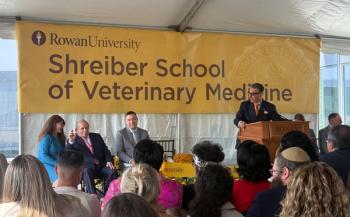
Outbreak: Secondary exposures make up about half of all confirmed equine herpes virus cases, veterinary officials report
Secondary exposures now make up about half of all confirmed equine herpes virus cases.
National Report
— Of the 47 cases of equine herpesvirus (EHV-1) now confirmed across nine Western states, 14 were contracted through secondary or tertiary exposure, veterinary officials report. Another 28 cases of equine herpesvirus myeloencephalopathy (EHM), the neurologic form of the disease, have been reported—25 from direct exposure during the recent National Cutting Horse Association competition in Ogden, Utah.
The U.S. Department of Agriculture (USDA) Animal and Plant Health Inspection Services (APHIS) now places the total number of EHV-1/EHM cases at 75. Eleven of those horses died or were euthanized.
In the last week, 15 new cases have surfaced, APHIS reports.
More than 400 horses in 19 states were exposed to the virus at the Utah event, and another 1,635 are at risk of secondary or tertiary exposure, APHIS says in its May 26 update on the outbreak.
Although the incubation period for EHV-1 is two to 14 days, Dr. Leonard Eldridge, Washington's state veterinarian, says the virus can shed for up to 28 days. The Nevada Department of Agriculture says it observed horses that attended the Utah event through May 22 for signs on infection. Horses at risk of secondary infection will be observed until June 5.
APHIS says horses known to have been exposed to the virus have been notified by state animal health officials, and suspect or confirmed cases are under voluntary or state quarantine.
As of May 25, here are USDA's totals on the outbreak:
• Arizona — 2 EHV-1 and 1 EHM from direct exposure, 8 EHV-1 from secondary/tertiary exposure;
• California — 9 EHV-1 and 6 EHM from direct exposure, 1 EHV-1 from secondary/tertiary exposure;
• Colorado — 9 EHV-1 and 6 EHM from direct exposure, 1 EHV-1 from secondary/tertiary exposure;
• Idaho — 1 EHV-1 and 3 EHM from direct exposure, 2 EHV-1 from secondary/tertiary exposure;
• Nevada — 1 EHV-1 from direct exposure, 2 EHM from secondary/tertiary exposure;
• New Mexico — 2 EHV-1 and 1 EHM from direct exposure, 1 EHM from secondary/tertiary exposure;
• Oregon — 4 EHV-1 and 1 EHM from direct exposure;
• Utah — 1 EHV-1 and 4 EHM from direct exposure, 2 EHV-1 from secondary/tertiary exposure;
• Washington — 4 EHV-1 and 3 EHM from direct exposure.
Nine horses with confirmed cases of EHV-1/EHM through direct exposure died or were euthanized, plus another two horses with confirmed cases contracted through secondary exposure.
Horse owners are being advised to notify veterinarians if they participated in the NCHA event or if their horse suddenly comes down with a temperature above 102-degrees-F, which typically precedes clinical signs, veterinarians say.
Newsletter
From exam room tips to practice management insights, get trusted veterinary news delivered straight to your inbox—subscribe to dvm360.






